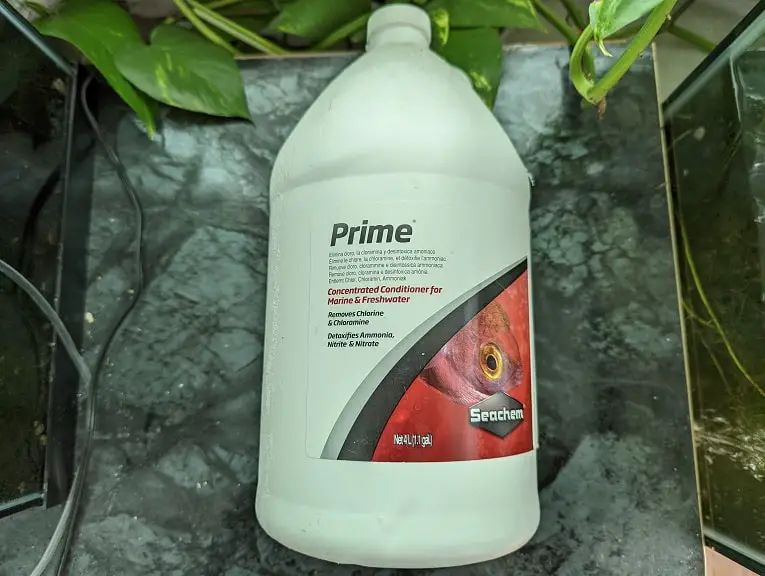Seachem Cupramine will help treat external parasites on your sick fish. So, how does this product affect the beneficial bacteria in your aquarium?
You can find out in this article at Aquarium Blueprints.
Quick Summary
While Seachem Cupramine won’t directly harm the beneficial bacteria living in your fish tank, it will slow its growth rate, which may cause issues if there is a disturbance in your biological filtration.
To find out if the treatment is causing issues, we recommend testing the ammonia, nitrite and nitrate concentrations of your aquarium. If you notice any elevated levels, then you can add live bacteria by dosing products such as Seachem Stability.
After you are done with treating your fish, use carbon or other chemical filtration to complete remove Cupramine from your tank so that the beneficial bacteria can start growing at a normal rate once again.
Does Seachem Cupramine kill the beneficial bacteria?
Seachem Cupramine won’t directly kill off the beneficial bacteria colonies that are already established in your fish tank.
However, the copper will slow down the growth rate of new beneficial bacteria. So, if the biological filtration gets disrupted or there is a major die-off of the bacteria, it is going to take longer than usual for these colonies to recover.
The lack of adequate biological filtration will results in spikes of the toxic ammonia, nitrite and nitrate compounds.
How to tell if Seachem Cupramine is affecting your biological filtration
To see whether or not Seachem Cupramine has affected the biological filtration in your aquarium, you will need to test your tank water.
Ideally, ammonia and nitrites should be at 0 ppm. For nitrates, the tank water should be below 40 ppm in most cases or below 20 ppm if you have more sensitive fish.
Keep in mind that Seachem Cupramine may cause a false positive if you are using a testing kit. To get an accurate reading of ammonia, Seachem recommend using Ammonia Alert or MultiTest Ammonia. You can purchase either one on Amazon, if you are interested, with the following links:
- Seachem Ammonia Alert(#CommissionsEarned)
- Seachem MultiTest Ammonia(#CommissionsEarned)
What to do when your biological filtration gets disrupted when using Seachem Cupramine
If the test shows a rise in ammonia, nitrites and/or nitrates to harmful levels, then you can try doing the following:
If you are still treating your sick fish with Seachem Cupramine, then you can dose your tank with live bacteria by using a product such as the Seachem Stability, which you can find on Amazon with this link (#CommissionsEarned). The live bacteria should help speed up the recovery of your biological filtration.
If you are done treating your fish with Seachem Cupramine, then you can add chemical filtration, such as carbon, in your tank to remove all of the copper. During this time, you can also add live bacteria to quickly rebuild the beneficial bacteria colonies.
Once there are no more traces of copper left in your tank, then you will be able to safely use Seachem Prime for water changes in addition to helping detoxify the excess ammonia, nitrites and nitrates in your tank.

Do not use Prime while there are still traces of Cupramine left in your tank as doing so will make Cupramine toxic.
